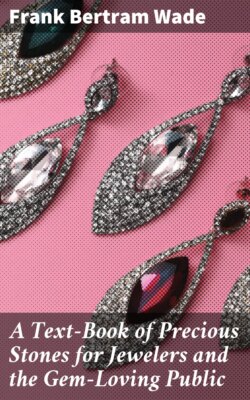Читать книгу A Text-Book of Precious Stones for Jewelers and the Gem-Loving Public - Frank Bertram Wade - Страница 7
На сайте Литреса книга снята с продажи.
HOW STONES ARE DISTINGUISHED FROM ONE ANOTHER
ОглавлениеTable of Contents
Precious Stones Distinguished by their Properties. One precious stone is best distinguished from another just as substances of other types are distinguished, that is to say, by their properties. For example, salt and sugar are both white, both are soluble in water, and both are odorless. So far the italicized properties would not serve to distinguish the two substances. But sugar is sweet while salt is salty in taste. Here we have a distinguishing property. Now, just as salt and sugar have properties, so have all precious stones, and while, as was the case with salt and sugar, many precious stones have properties in common, yet each has also some properties which are distinctive, and which can be relied upon as differentiating the particular stone from other stones. In selecting properties for use in distinguishing precious stones, such properties as can be determined by quantity, and set down in numbers, are probably more trustworthy than those that can be observed by mere inspection. Those also which have to do with the behavior of light in passing through the stone are extremely valuable.
Importance of Numerical Properties. It is because gem dealers so often rely upon the more obvious sort of property, such as color, that they so frequently make mistakes. There may be several different types of stones of a given color, but each will be found to have its own numerical properties such as density, hardness, refractive power, dispersive power, etc., and it is only by an accurate determination of two or three of these that one can be sure what stone he has in hand. It must next be our task to find exactly what is meant by each of these numerical properties, and how one may determine each with ease and exactness.
